Hello dear Hive community!
A few days ago, I visited the Mohammed 6 Museum of Contemporary Art, located just a few dozen metres from Rabat-Ville station in the city centre.


As soon as I arrived, I was struck by the architectural beauty of the building. Before entering the museum I took a little tour of the building, the statues and decorations that are installed give a charm and an initial atmosphere to the visit. I stopped for a moment to contemplate them.
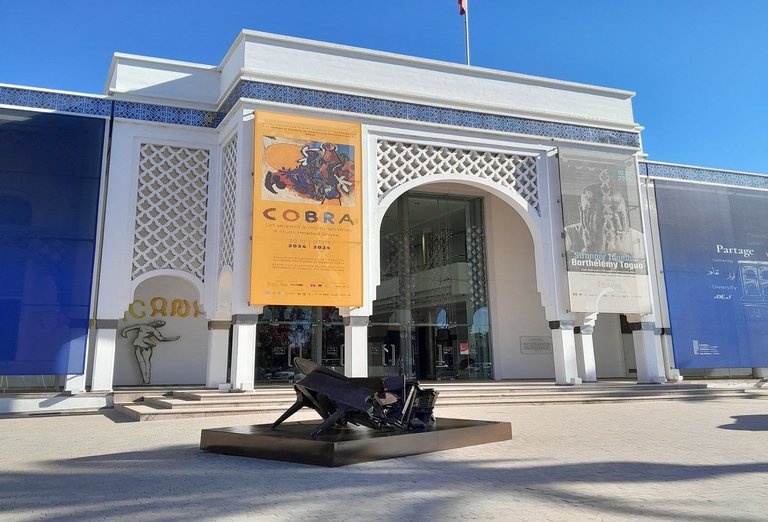
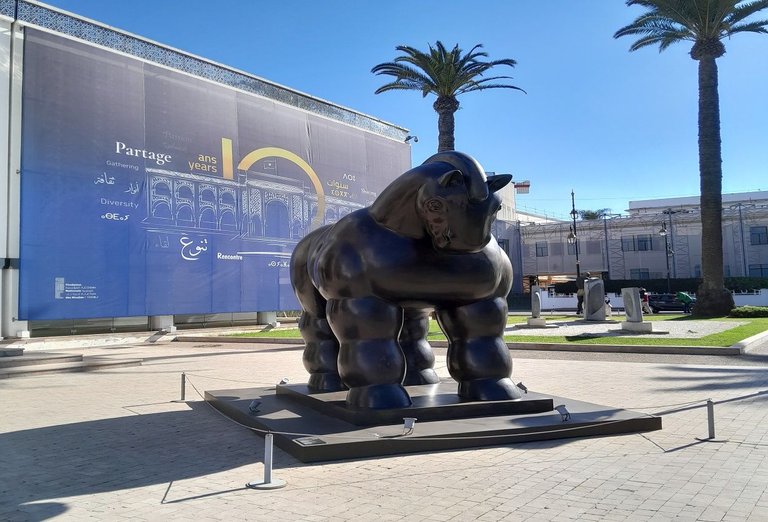
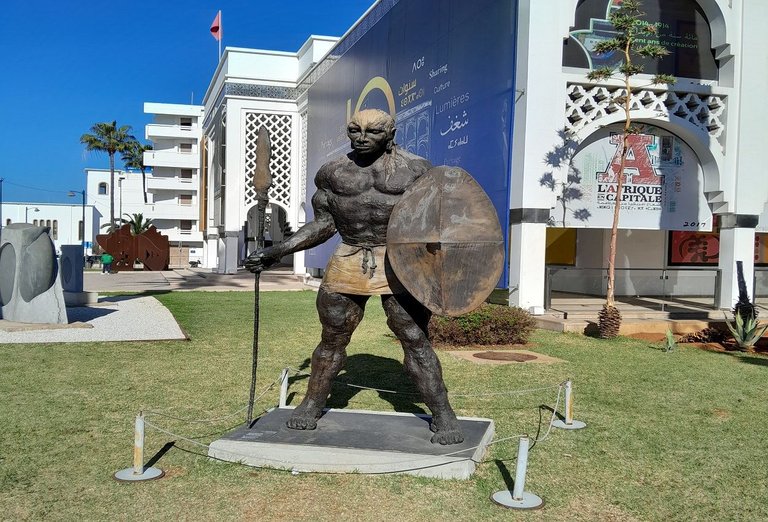
As I entered the museum, a receptionist greeted me warmly and introduced me to the current exhibitions. One of them was dedicated to the COBRA movement. The name intrigued me, and I couldn't resist going to see what it was all about. So I headed straight for the rooms on the ground floor where this captivating exhibition was taking place!
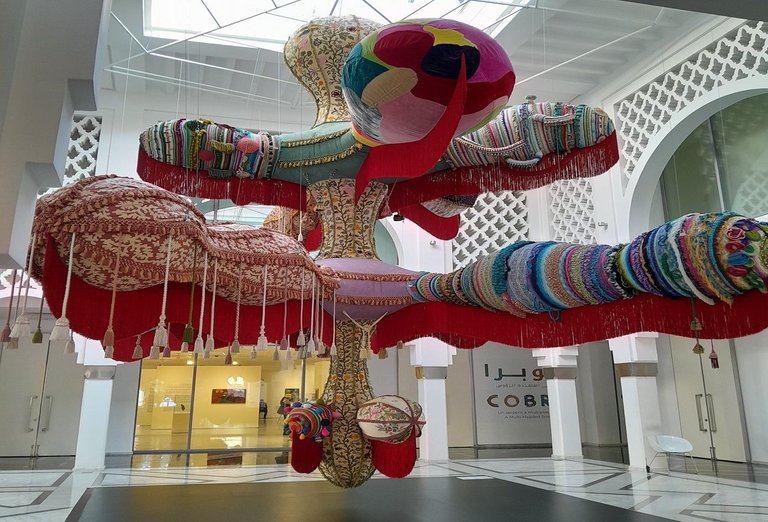
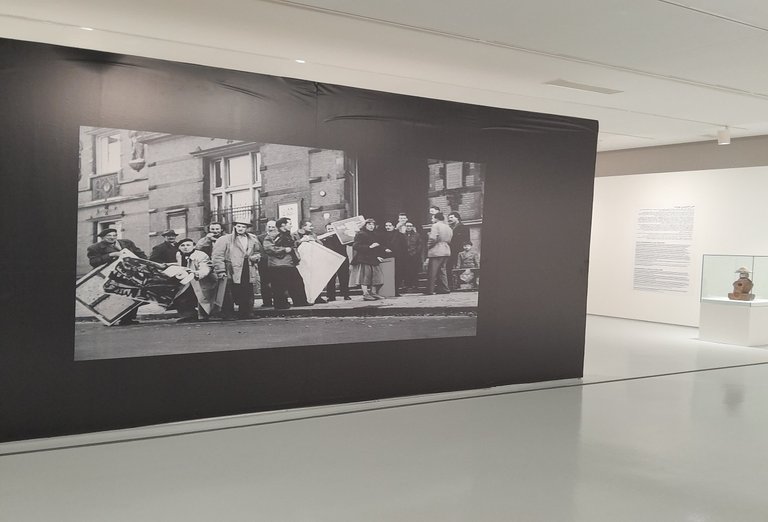
The Cobra movement, born in 1948, takes its name from the three main cities of origin of its founders: Copenhagen, Brussels and Amsterdam. Founded by artists such as Asger Jorn, Karel Appel and Constant, Cobra was a rejection of rigid post-war artistic conventions. Their mission was to free art from academic constraints and draw inspiration from the spontaneity of children's drawings, primitive art and raw forms. The exhibition didn't just show the works: it also explained the context in which the movement was born: after the Second World War, these artists wanted to express a profound need to rebuild, to create a new world through unfettered art.
As I moved through the exhibition, I was truly captivated by the beauty of the works. The paintings and sculptures are truly magnificent, with their vibrant colours, abstract forms and remarkable expressiveness. Each painting, each sculpture, exuded a special charm, a unique attraction! In what follows, I'm going to share some of these works with you, along with some information about the artists and their relationship with the movement and with art in general.
A quick note: the information comes from the posters next to each group of works, and I've tried to summarise so as not to make this post too long.
DANISH EXPERIMENTAL ART
During the German occupation, Danish experimental art was able to develop more freely than elsewhere, thanks in particular to the magazine ‘Helhsteine’, founded by Asger Jorn. This magazine, published between 1941 and 1944, explored a variety of subjects such as art theory, literature, photography and primitive art, while rejecting the rigidity of previous artistic movements. Danish artists, influenced by Expressionism, Dadaism and Surrealism, sought to create ‘living art’ that was spontaneous and deeply rooted in everyday life.
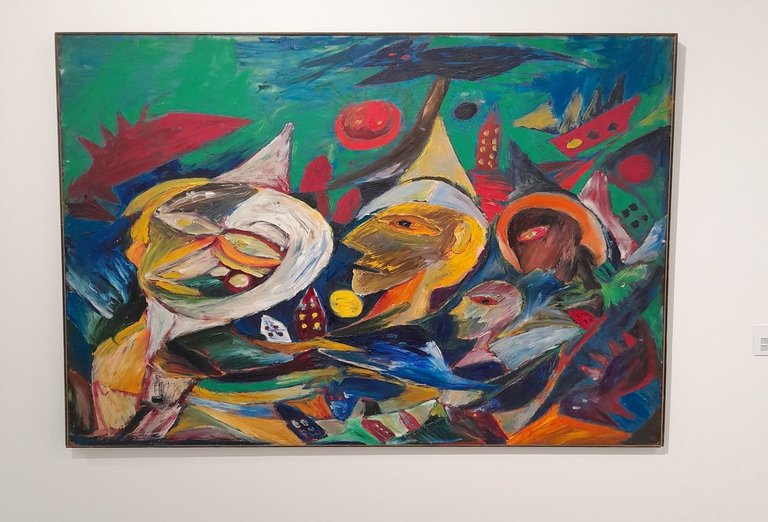
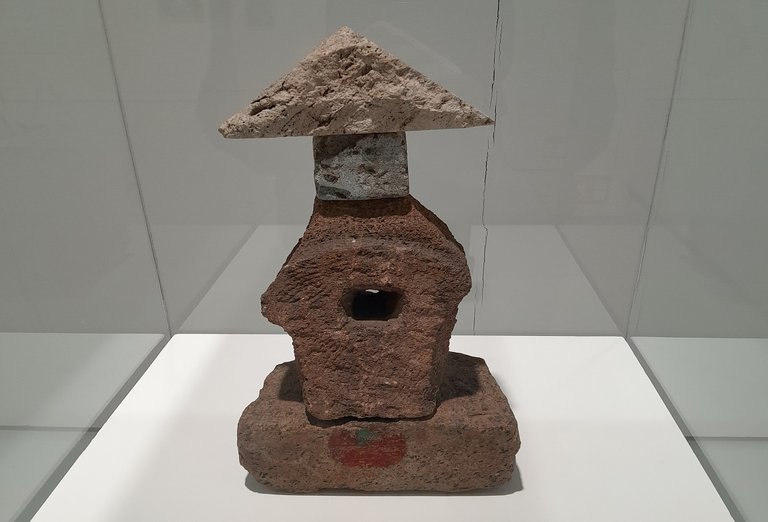
EXPERIMENTAL ART IN THE NETHERLANDS
In 1946, Constant, a Dutch artist, met Jorn, a Danish artist, at an exhibition in Paris, and they decided to found an experimental art group. Their project took shape in 1948 with other Dutch artists such as Appel, Corneille and Wolvecamp, despite disagreements over their artistic visions. Inspired by revolutionary Surrealism, they published a magazine called Reflex, in which they advocated collective, anti-individualist art, rejecting traditional style to create a new ‘popular art’. The group later merged with the Cobra movement, emphasising cooperation while leaving room for individual ideas.
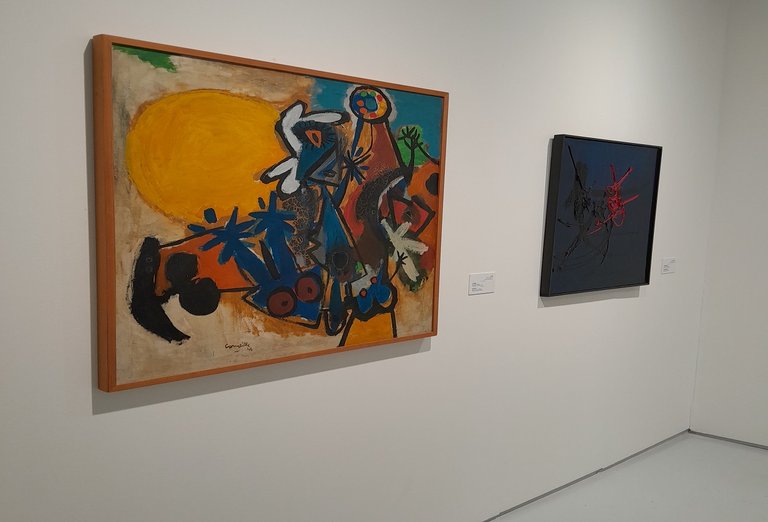
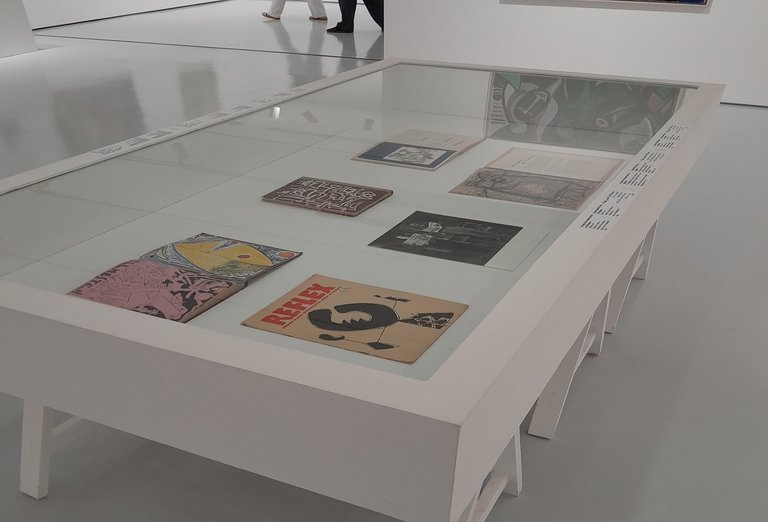
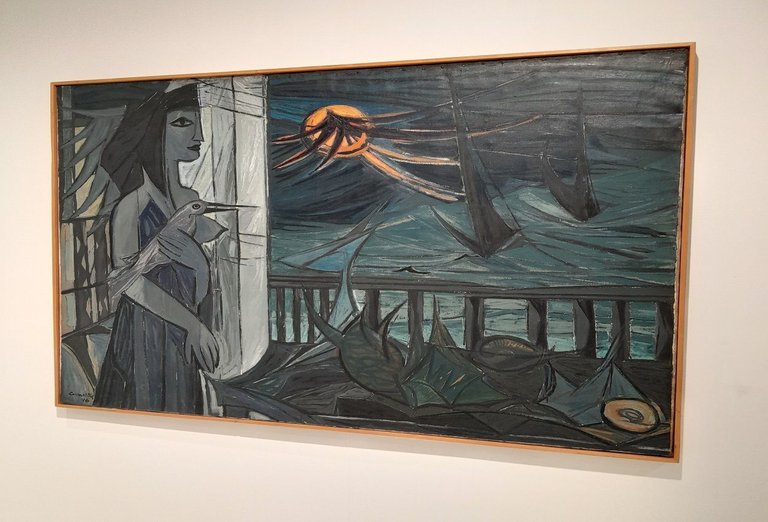
REVOLUTIONARY SURREALISM
In 1947, a number of artists from countries including Belgium, France and Czechoslovakia founded the Revolutionary Surrealism movement, with the Belgian poet Christian Dotremont as its central figure. This group, which mixed art and communist ideals, organised conferences in 1948, but these often degenerated into chaos, with heated debates and even objects thrown! Disagreements soon erupted between the artists, particularly over the importance of theory over artistic practice. Dotremont and the painter Jorn did, however, collaborate on ‘word paintings’, laying the foundations of the Cobra movement, which advocated lively, experimental art, far removed from cold abstraction. In 1948, at a conference in Paris, tensions came to a head, leading to a split. Dotremont, Constant and other members met at the Café ‘Notre Dame’ to draw up a new declaration, formalising the creation of the Cobra movement.
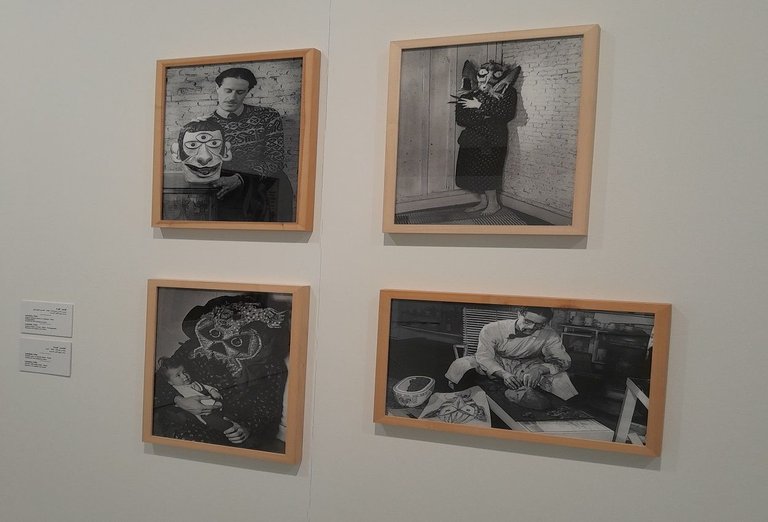
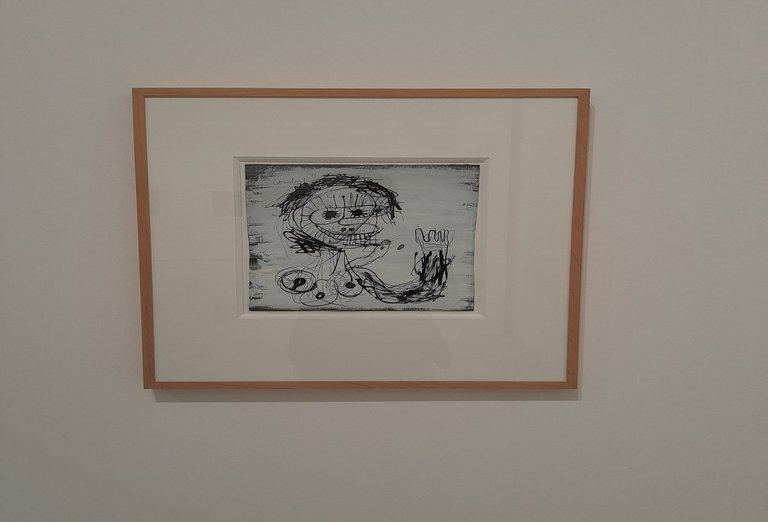
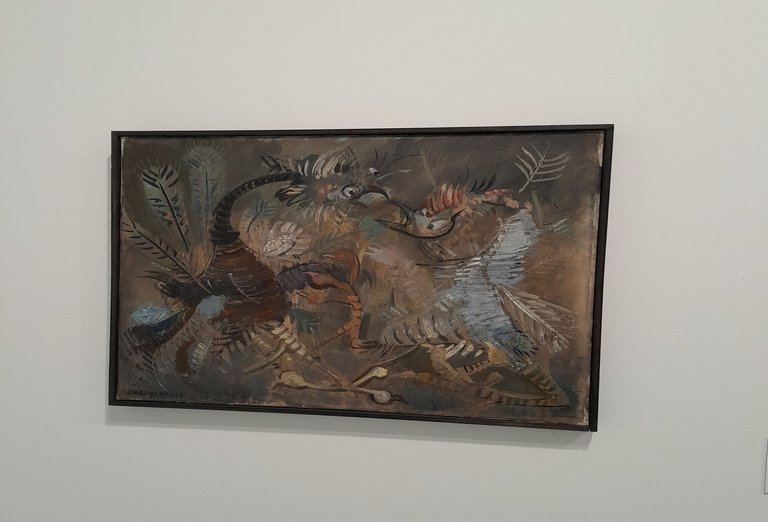
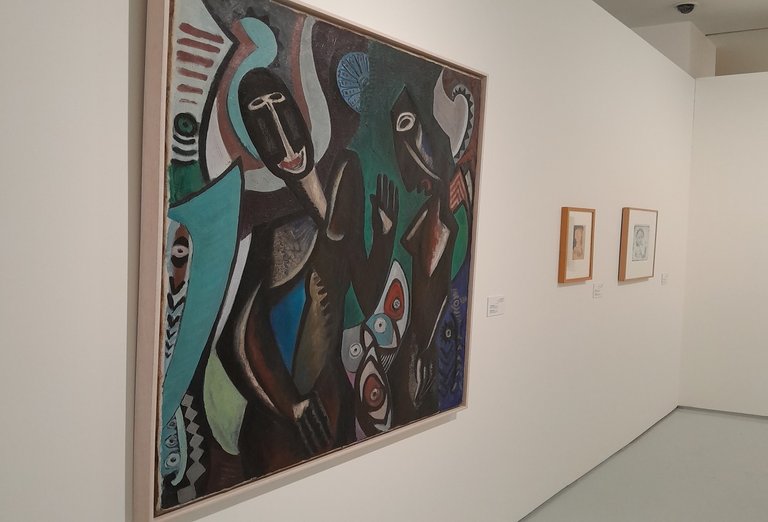
ASGER JORN
Jorn, a committed and visionary artist, has constantly sought to collaborate and innovate in the field of art. After participating in movements such as Linien and Høst in Denmark, he became involved in cultural resistance during the Second World War and contributed to many publications. His European network expanded after the war, notably with Constant and Dotremont, with whom he co-founded the Cobra movement, which he considered a form of artistic soul. Jorn defended the idea that art was an essential human expression and that it should remain accessible to all, without any hierarchy of styles. Although his influential theories left their mark on Cobra, the movement disbanded after he was hospitalised with tuberculosis. Despite personal tensions with Constant and Dotremont, Jorn regained momentum after his recovery, organised artistic meetings and joined the Situationist movement in 1957, combining art and social revolution. He continued to create intensely until the momentous events of 1968.
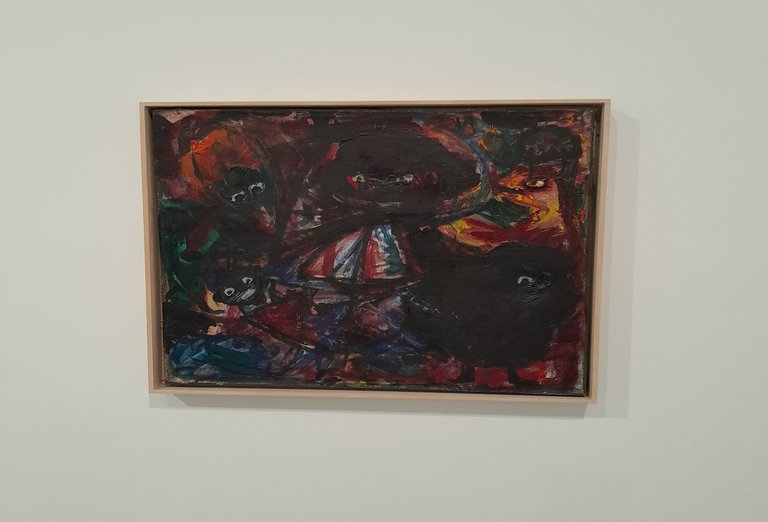
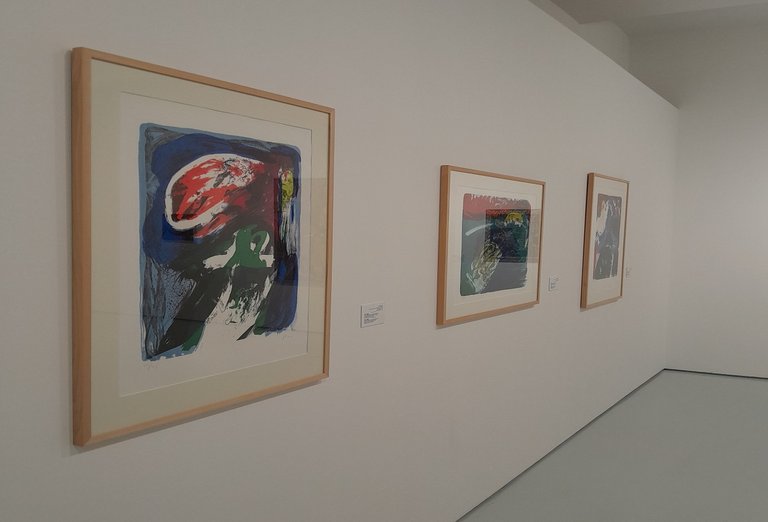
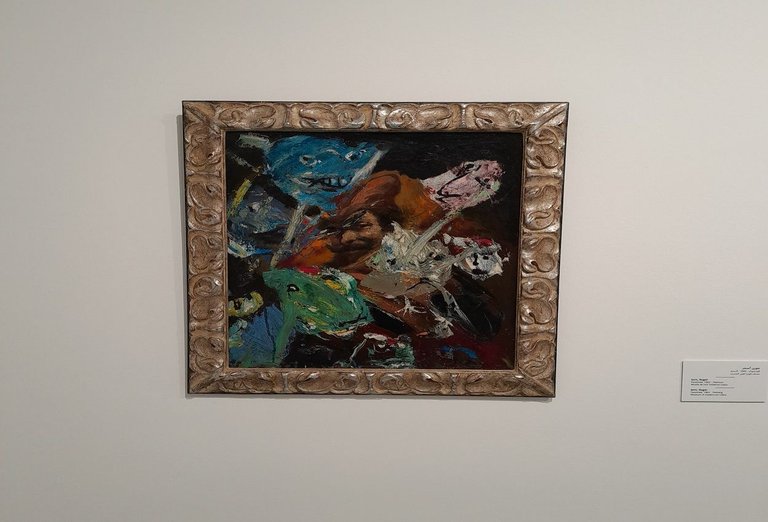
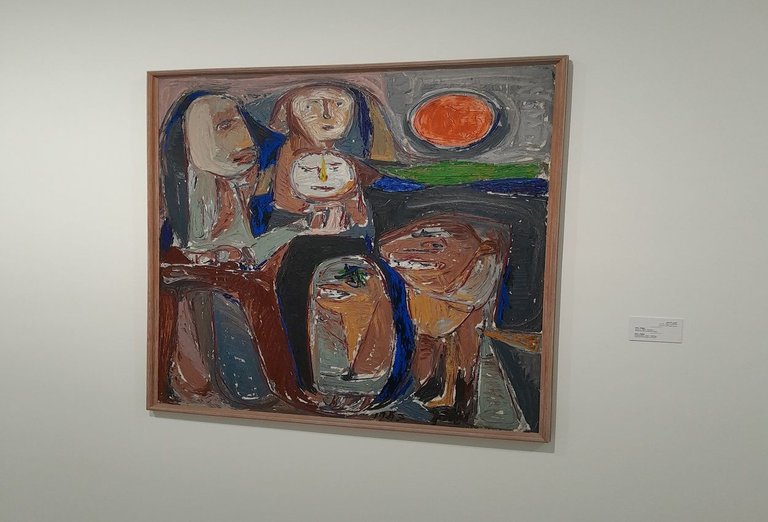
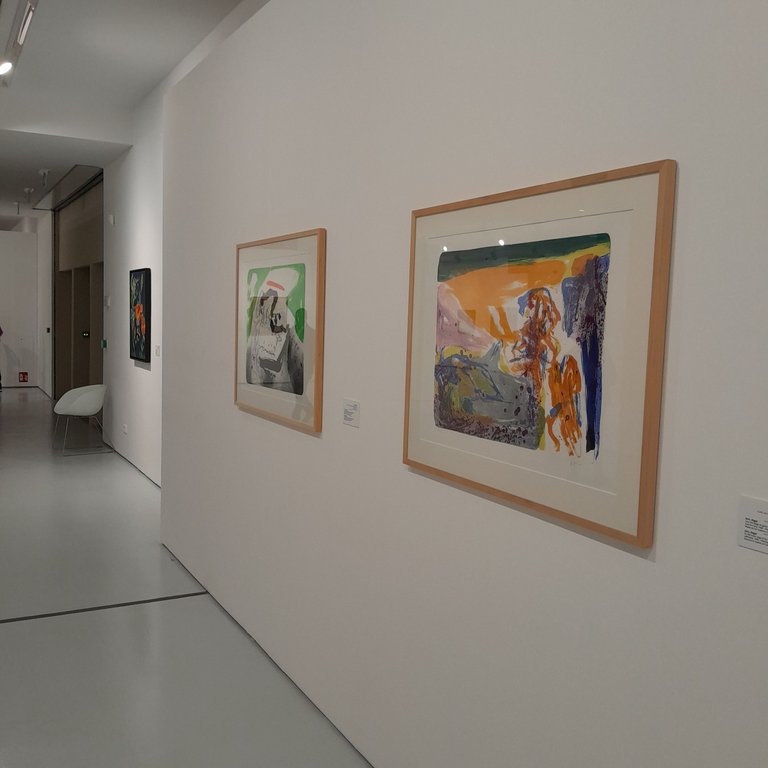
CONSTANT
Constant, a Dutch artist and theoretician of the Cobra movement, was profoundly influenced by his meeting with Jorn in 1946, which led him to found the experimental art group in Holland, the precursor of Cobra. While playing a major artistic role, Constant also left his mark on the movement through his theoretical reflections, denouncing the elitist norms that stifled creativity and calling for a universal artistic revolution. Although he was criticised by Dotremont for his interest in socialist realism, Constant sought to reinvent this style in the service of social struggle. After the collapse of Cobra in 1951, he turned to abstraction, giving birth to New Babylon (1959-1974), a futuristic vision of a playful society where art shapes the spaces of life. This project still embodies Cobra's ideals of innovation and creative freedom.

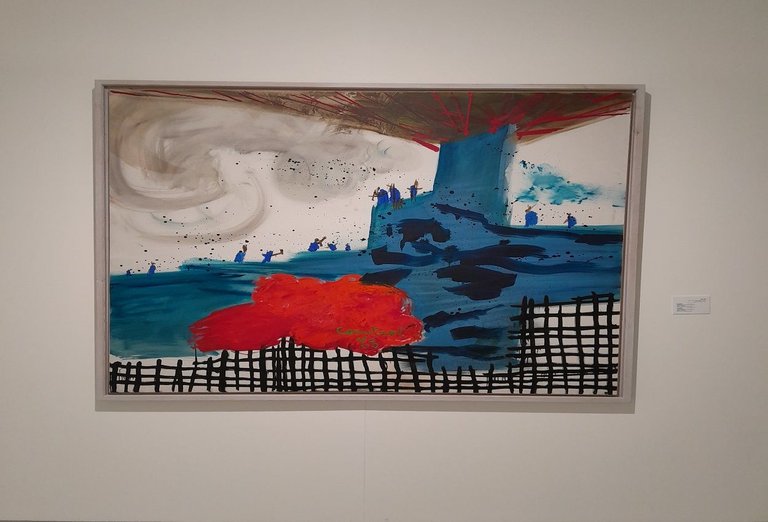
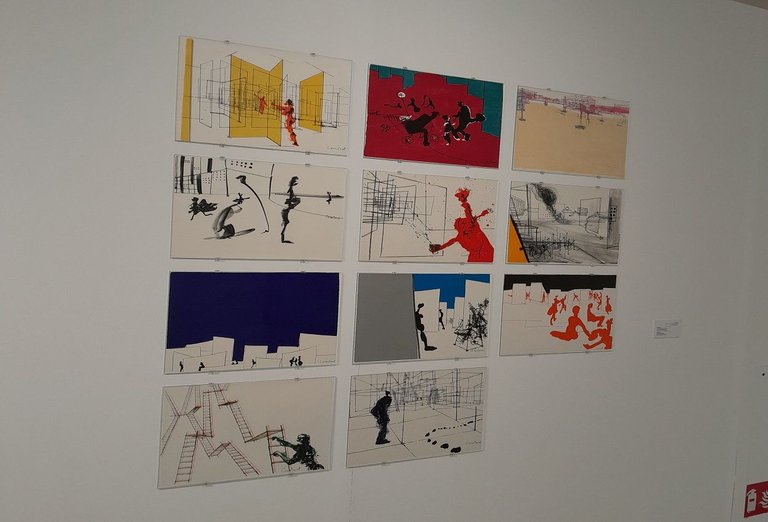
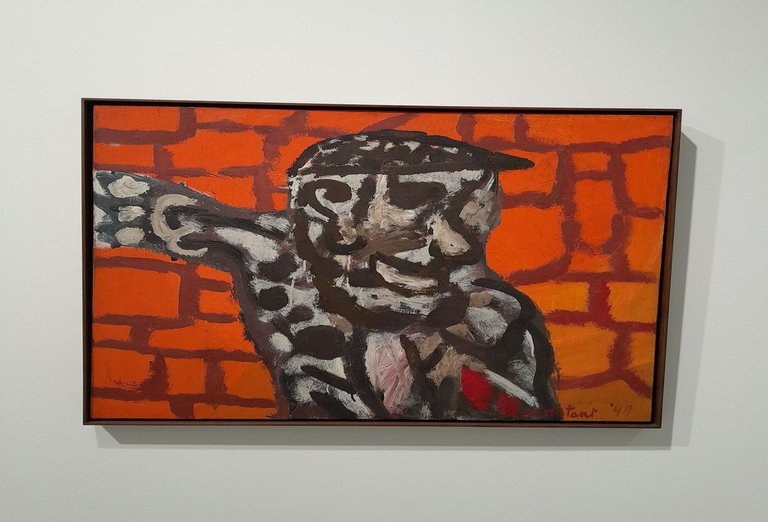
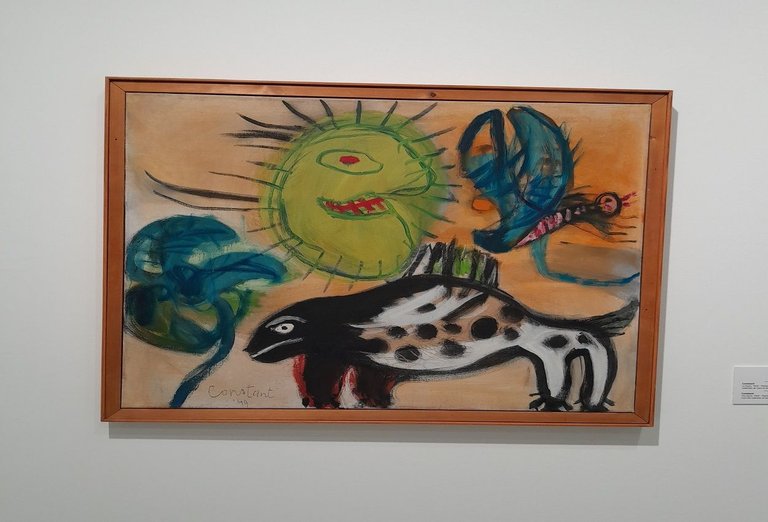
A COLOURFUL GROUP
The Cobra movement saw great diversity in its participants, including artists from ten different countries. The first major exhibition in 1949 in Amsterdam showed the richness and impact of the movement. Several artists such as Nieuwenhuys and Rooskens left after tensions arose, while others, such as Lotti van der Gaag and Shinkichi Tajiri, were close to the movement without officially being part of it. In Denmark, artists such as Else Alfelt and Mogens Balle contributed, as did Britons Stephen Gilbert and William Gear. Jean-Michel Atlan, a French artist, also supported the movement after the collapse of Surrealism, turning his studio into a space for like-minded artists.
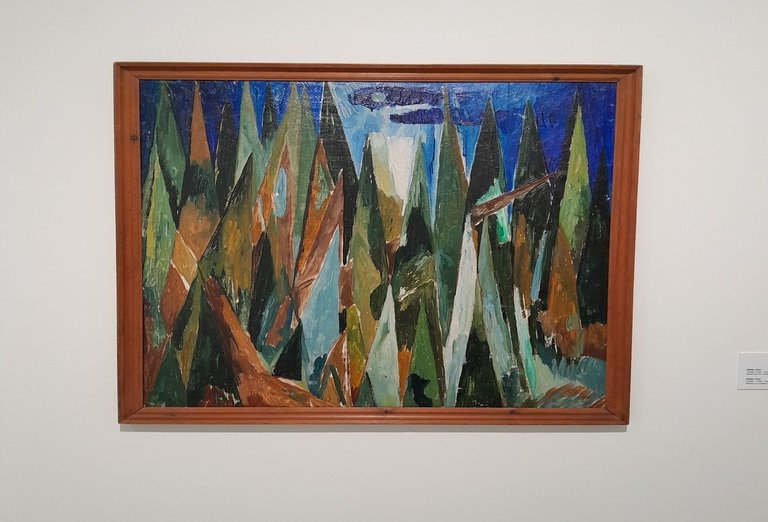
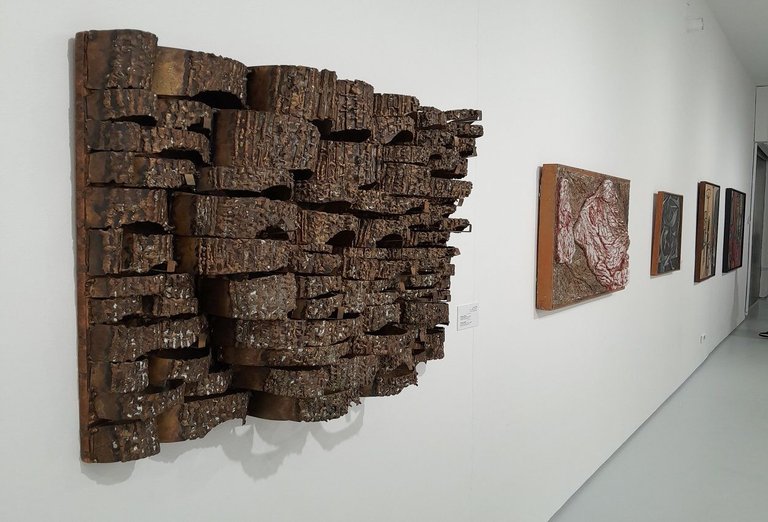
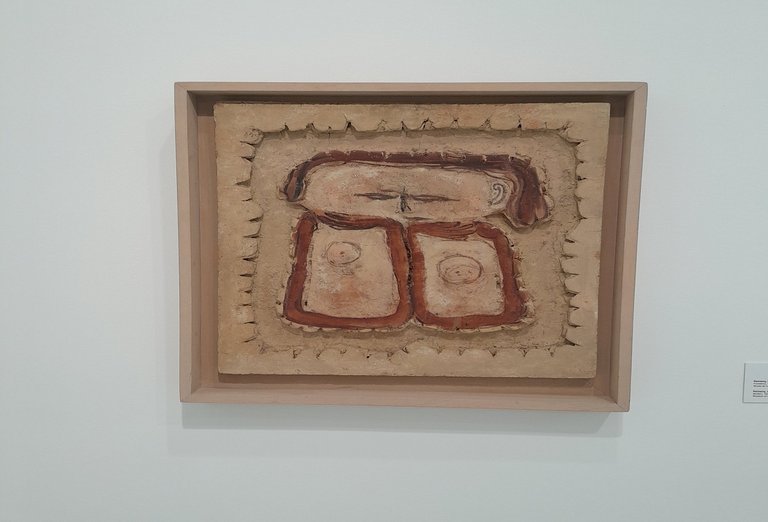
DIFFERENT PERSPECTIVES ON THE COBRA MOVEMENT
In the 1960s, after the end of the Cobra movement, articles began to be published on its artistic legacy, notably a study by Willemijn Stokvis in 1974 which defined the movement by a specific ‘Cobra language’, notably through the style of painting developed by Danish artists. However, the poet and founder of the movement, Dotremont, rejected this vision, claiming that Cobra was an independent initiative, marked by interspecialist works and collaborations between poets and artists.
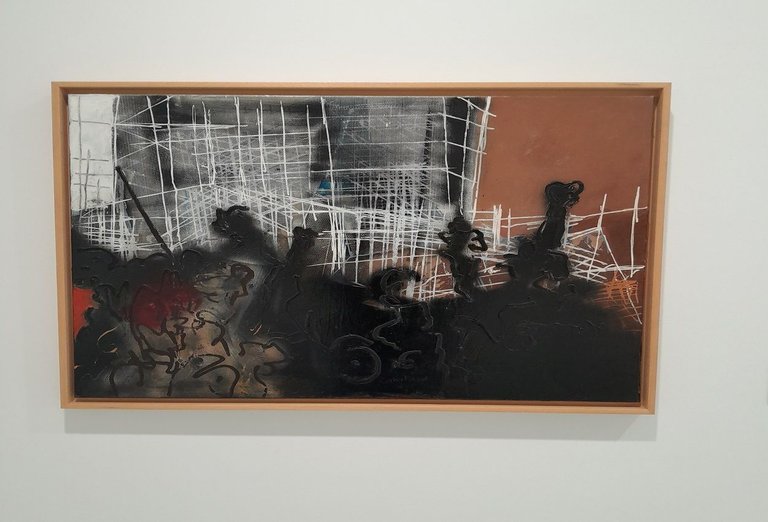
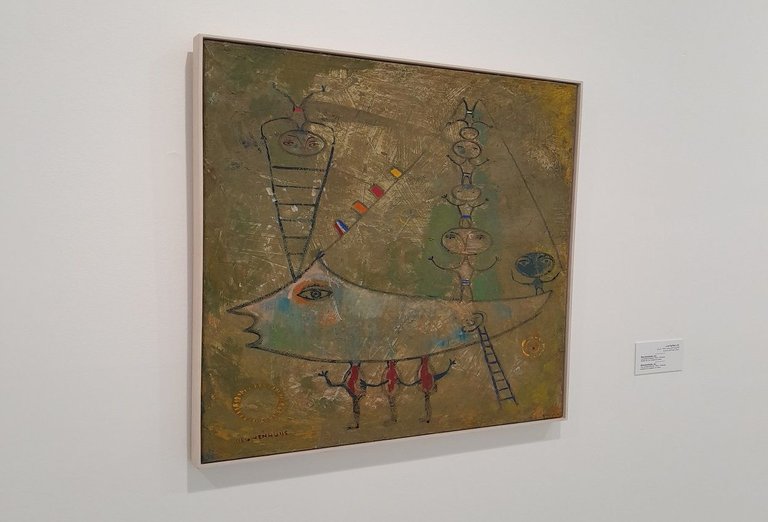
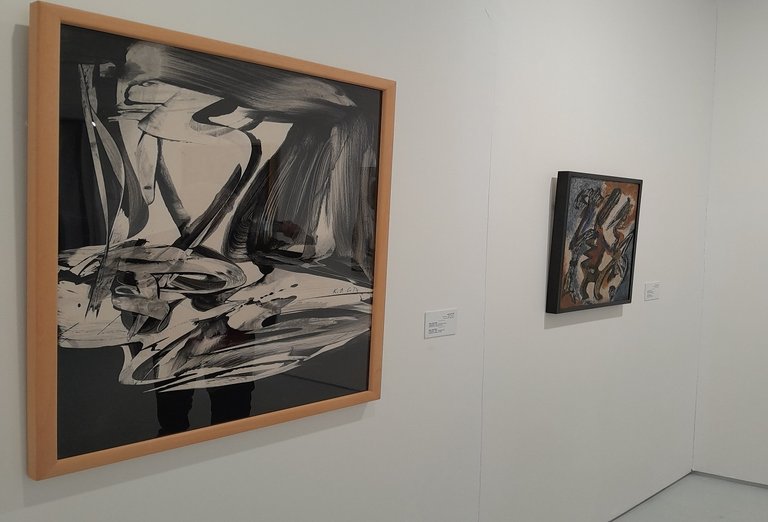
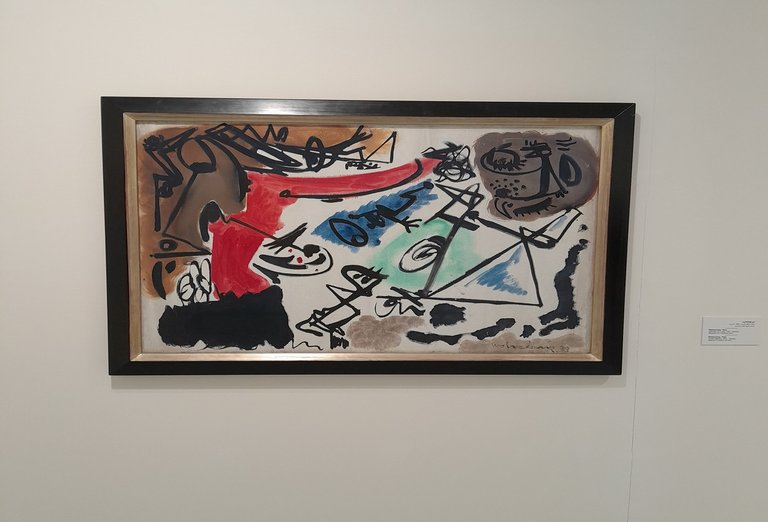
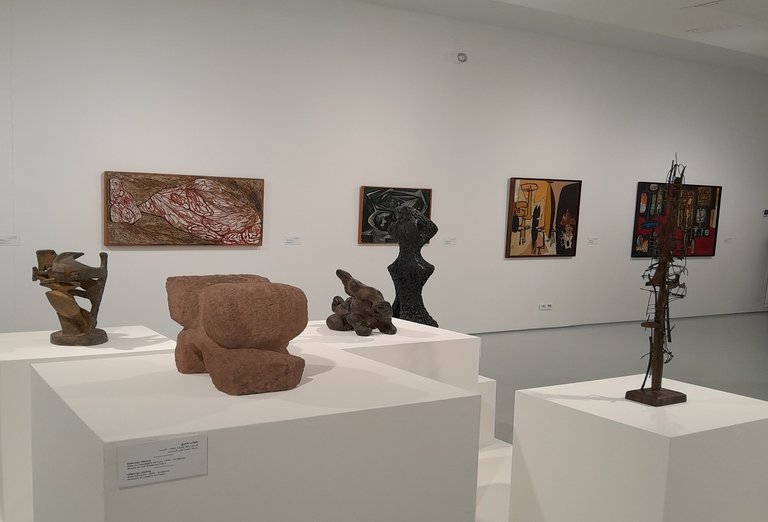
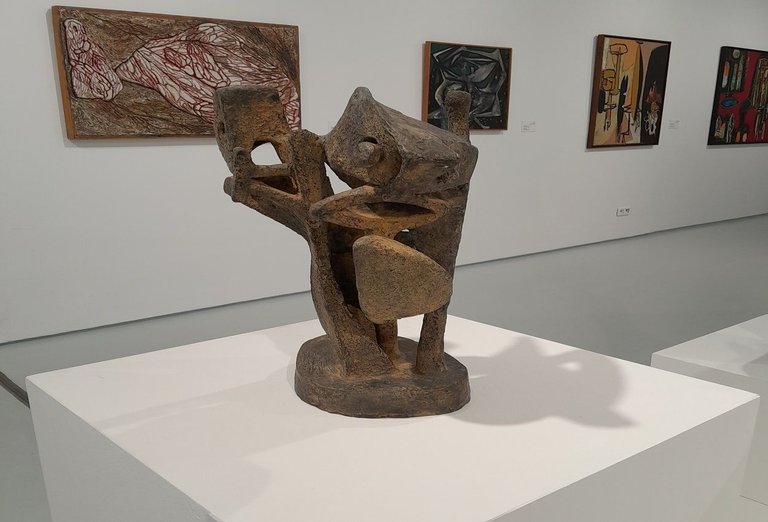
CERAMICS
The artists of the movement also used ceramics as the basic medium for their works of art. For these artists, there are no limits to the material they use to express themselves. For example, much of Jorn's art is also based on ceramics. Jorn covered hundreds of vases, pots and bowls with coloured mud. Although the artists of the cobra movement speak of an ‘artistic experiment in ceramics’, they mainly work on ceramics that have already been shaped in factories.
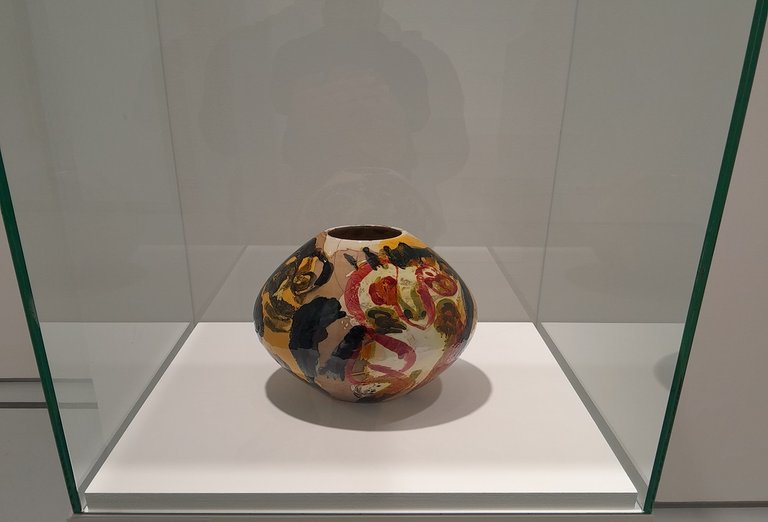
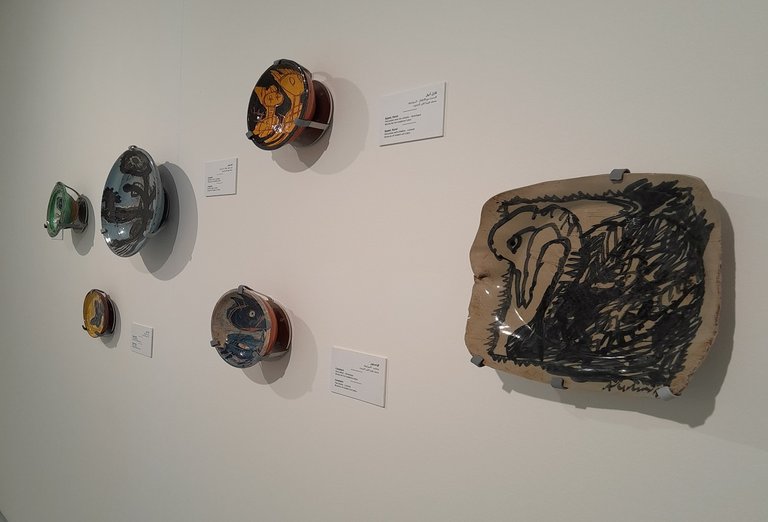
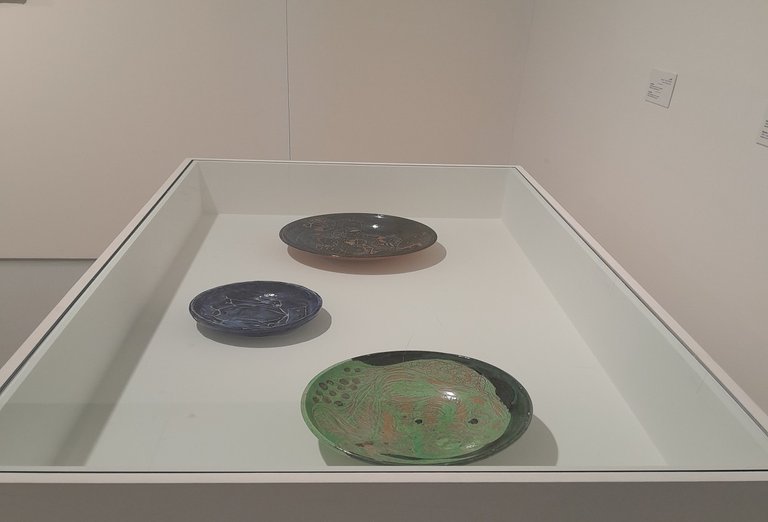
CORNEILLE
At the beginning of the Second World War, Corneille studied at the Academy of Fine Arts in Amsterdam, where he became friends with the artist Appel. After moving to Budapest in 1947, he met Doucet, a French artist, and was influenced by his creative freedom. He also discovered Paul Klee's approach to naive creativity. On his return to Holland, Corneille, along with Appel, Constant and Jorn, founded the experimental art group, which became the nucleus of the Cobra movement. Corneille played a key role in organising exhibitions and creating the magazine ‘Reflex’.
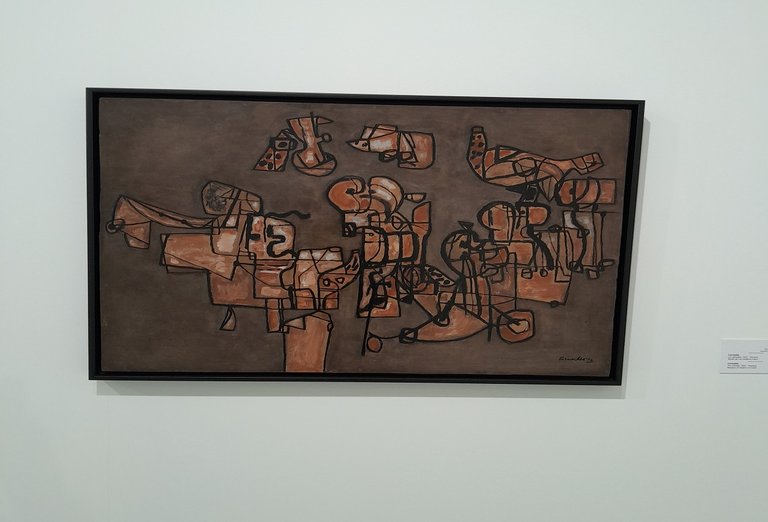
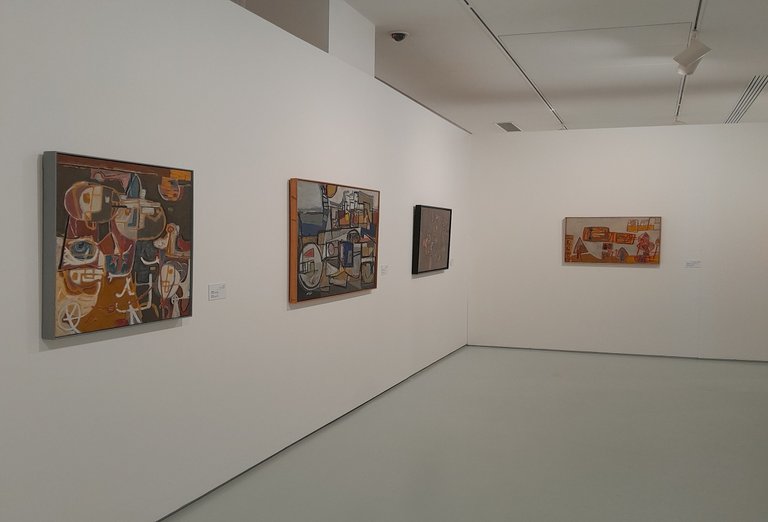
EUGÈNE BRANDS
Brands, a young self-taught artist influenced by Surrealism, has always wanted to question conventions and what is considered ‘normal’. His experimental work attracted the attention of Willem Sandberg, who connected him with the Cobra movement. Although he shared the enthusiasm for experimentation and popular art, Brands preferred to work alone, with a gentler, more philosophical style than his peers. After a dispute over income from an exhibition in Amsterdam in 1949, Brands broke away from the Cobra movement, although he later acknowledged the group's impact on his career, offering him new freedom of expression and artistic recognition.
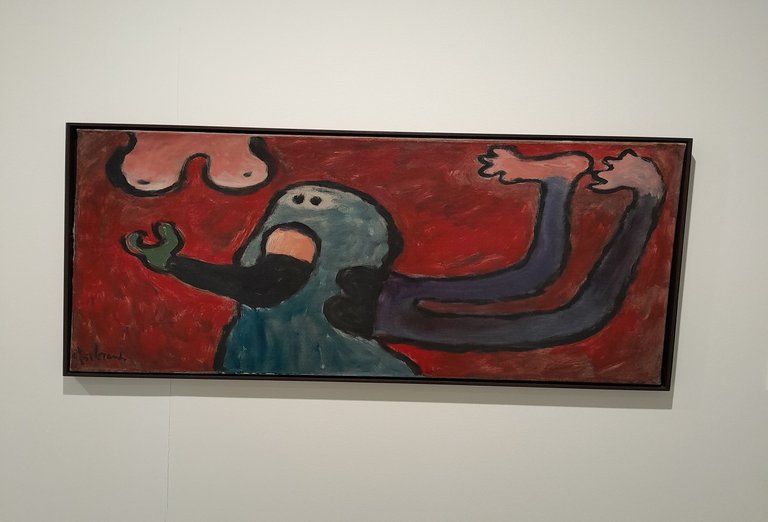
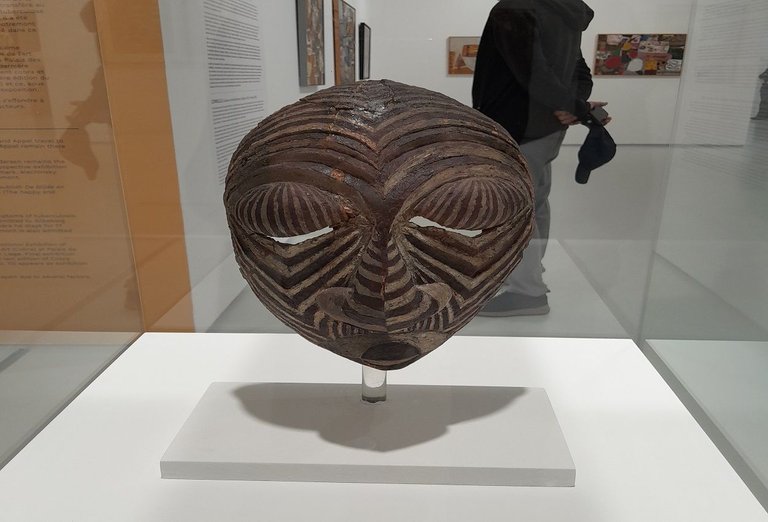
KAREL APPEL
After studying at the Academy of Fine Arts in Amsterdam, Karel Appel was inspired by the works of Jean Dubuffet and art brut, influenced by his stay in Paris with Corneille. Back in Amsterdam, he and Constant founded the experimental art movement that later became known as Cobra. Although he took an active part in the group's meetings and exhibitions, Appel stood out for his rejection of the intellectual theories imposed on art and for his independence. Despite less favourable recognition from the public and the press, particularly after an exhibition at the Stedelijk Museum, he continued his career, moving to Paris, where he quarrelled with Corneille.
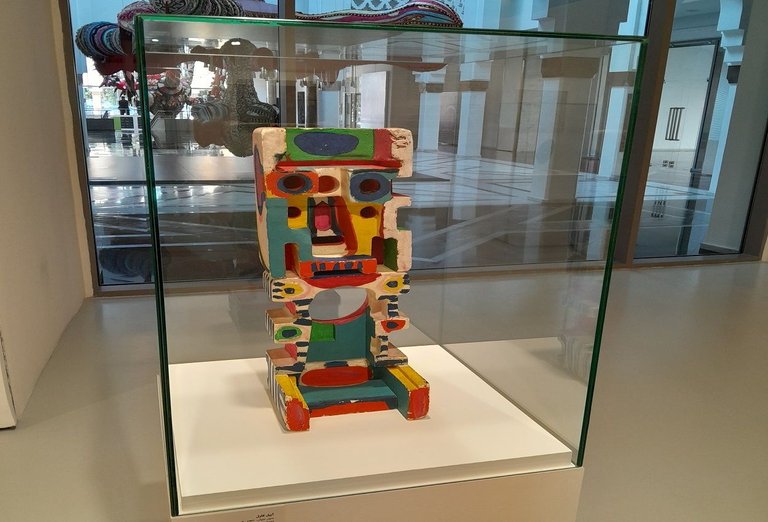
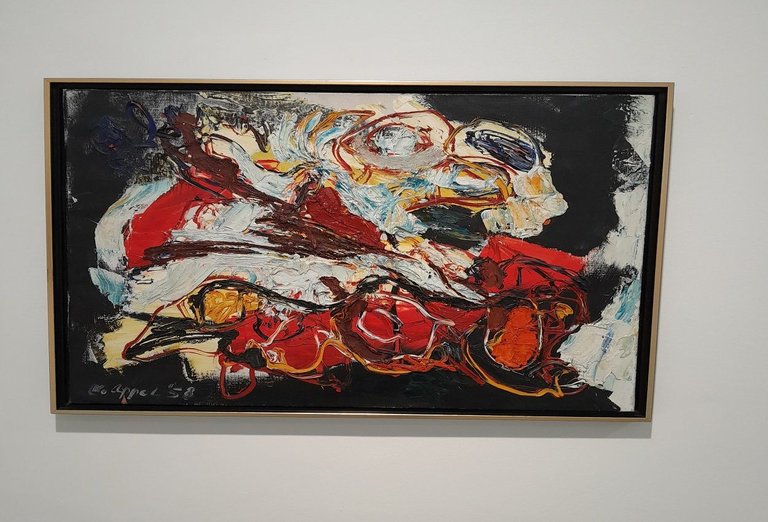
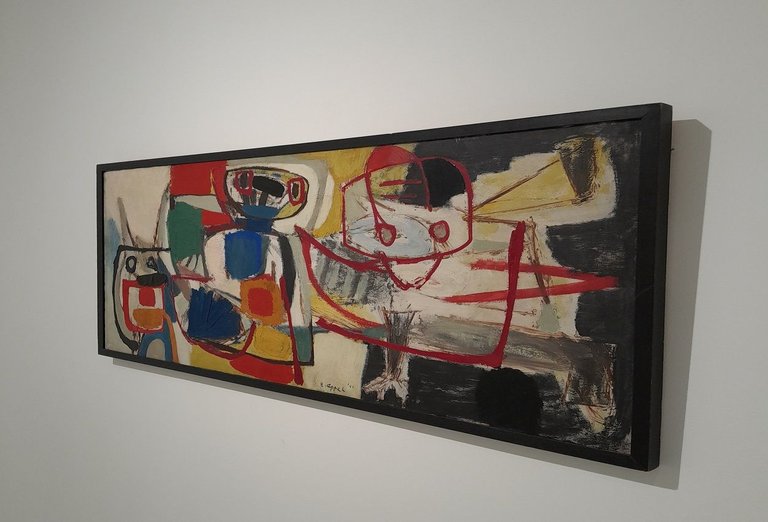
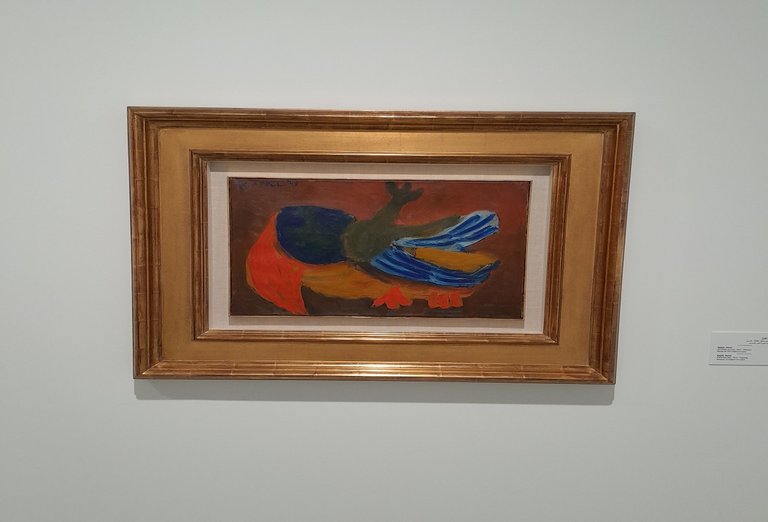
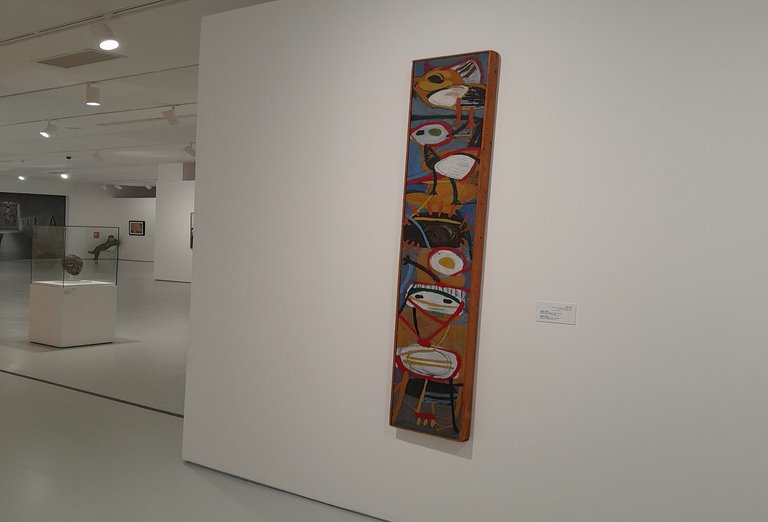
PIERRE ALECHINSKY
In 1948, after studying documentary illustration and typography, Alechinsky turned to painting and discovered the Cobra movement in 1949. He became a key player in the movement, helping to organise exhibitions and publish Cobra magazine with his wife Micky. He founded the Ateliers du Marais in Brussels, a meeting place for members of the movement. Although his style emerged after Cobra, it was influenced by his exchanges with the poet Dotremont, particularly on oriental calligraphy. Their collaboration illustrates the essence of the movement, which valued the union of image and text in multidisciplinary works. Even after the official end of the movement, Alechinsky continued to work with artists such as Appel, Jorn and Dotremont.
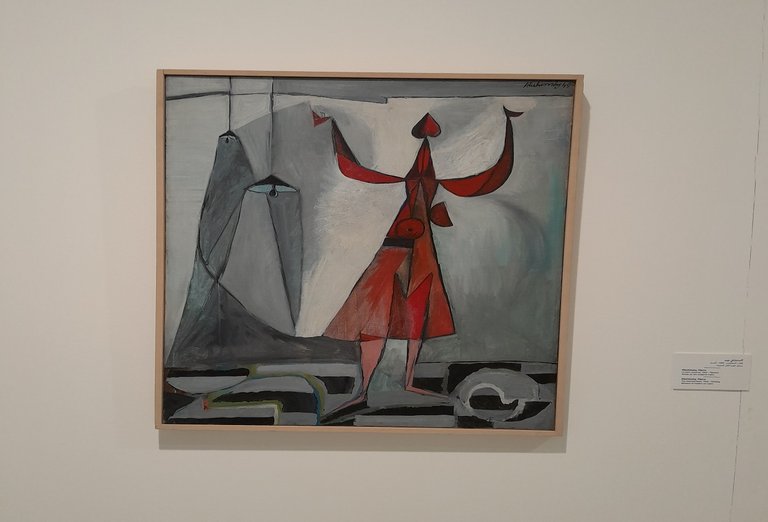
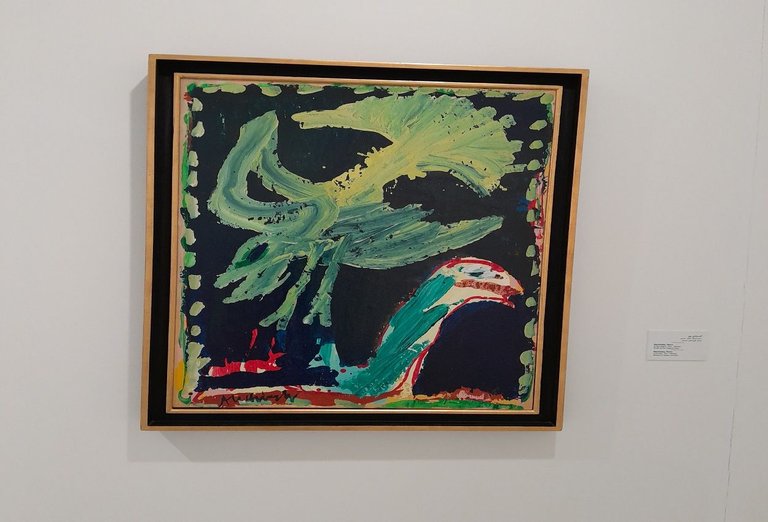
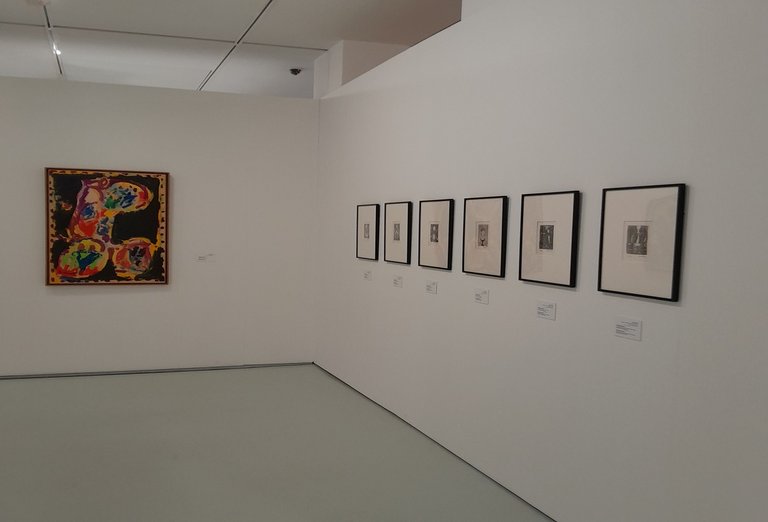

On finishing my visit to the COBRA exhibition, I had a chance to chat with a member of the museum staff, and it was there that he informed me that some Moroccan artists did, indeed, have links with the COBRA movement! The staff also showed me where another exhibition was being held simultaneously at the museum, that of the Moroccan artist Chaïbia Tallal, which was only a few steps away from the COBRA exhibition. So it was a perfect opportunity to discover other works while continuing my visit.
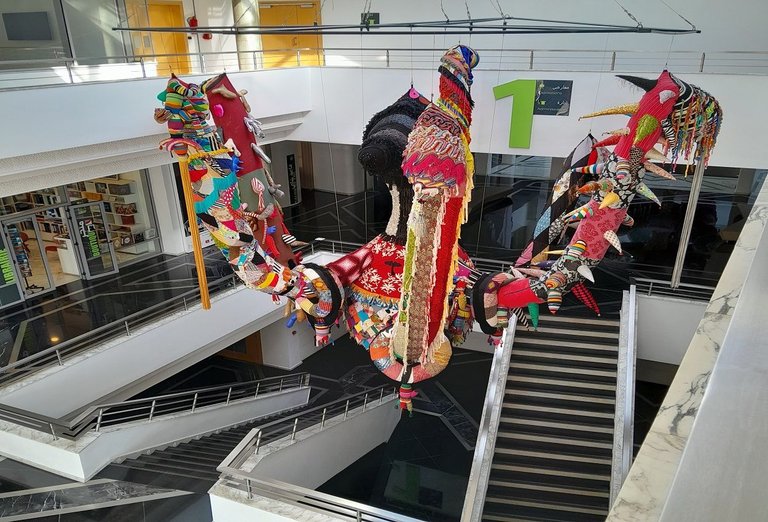
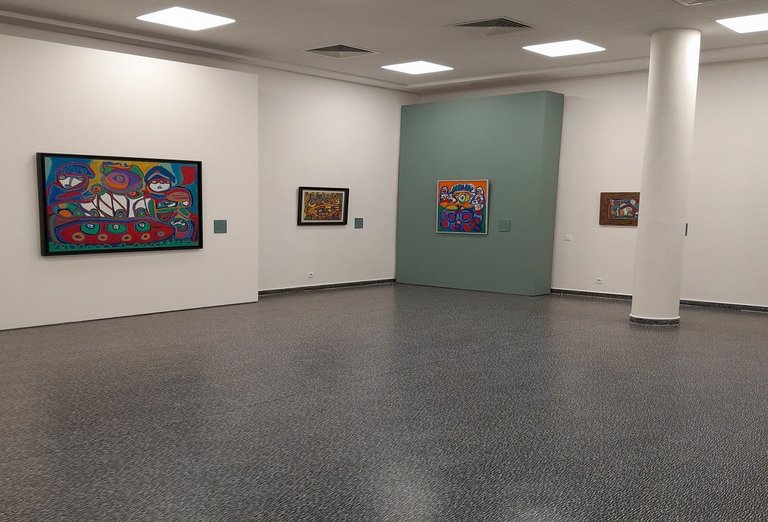
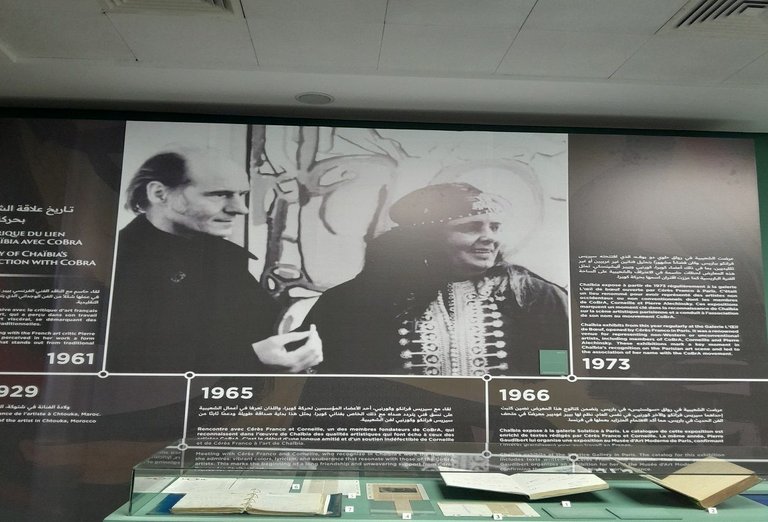
Chaïbia Tallal was born in 1929 in Chtouka (a region in south-west Morocco, near the city of Agadir) and grew up in a rural environment where she discovered popular arts such as weaving and embroidery, developing a sensitivity to the colours and symbols of Morocco's richly traditional culture. Her connection with nature nourishes an imagination that transcends reality, claiming a creative freedom that challenges social conventions. Self-taught, she began painting in 1961, mixing figuration and abstraction, exploring portraits, scenes of life and rituals.
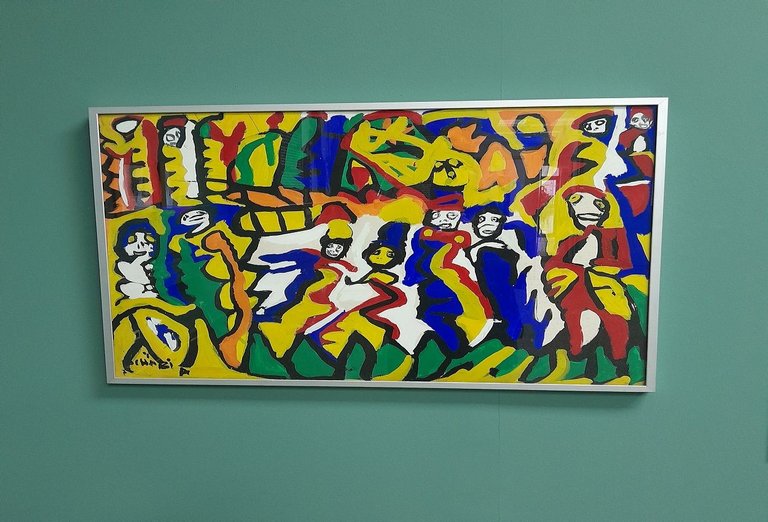
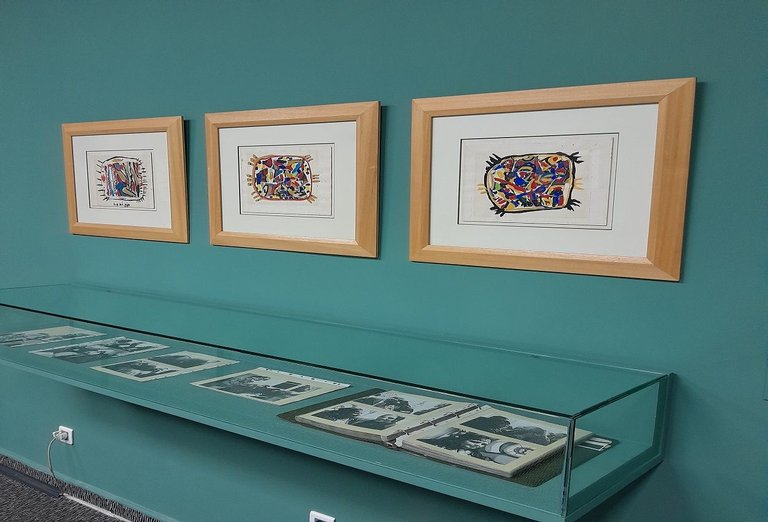
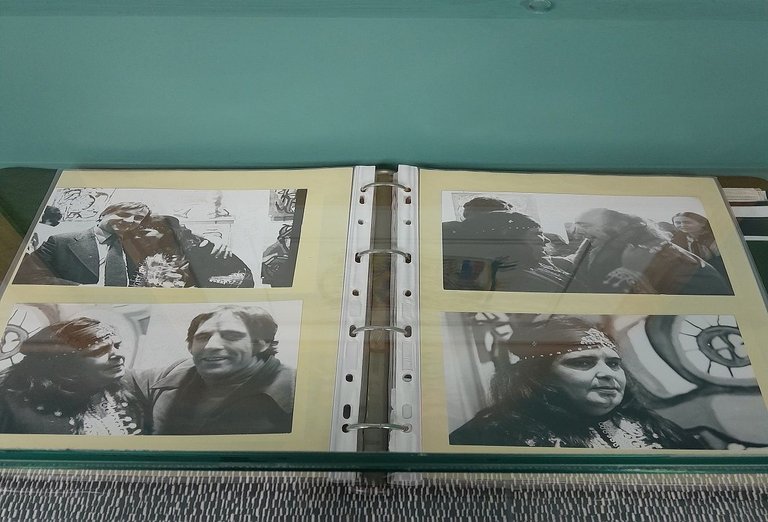

Her talent attracted Pierre Gaudibert, who exhibited her work in Casablanca and Paris in 1966, opening the doors to the international art scene. With the support of Cérés Franco and Luis Marcel, she held numerous exhibitions in the 70s and 80s. In the 80s, her works gained worldwide renown, and were included in prestigious collections.
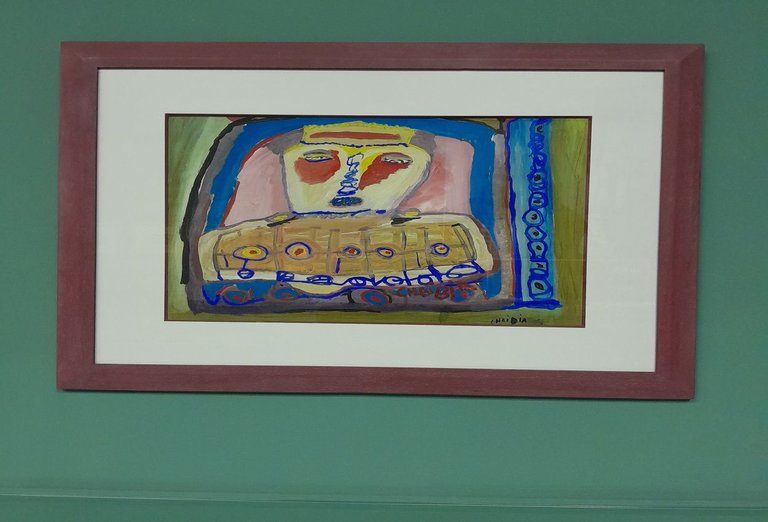
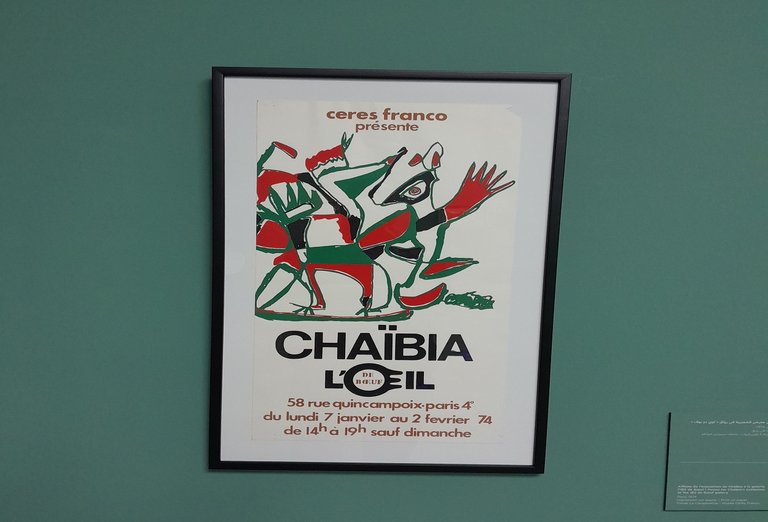
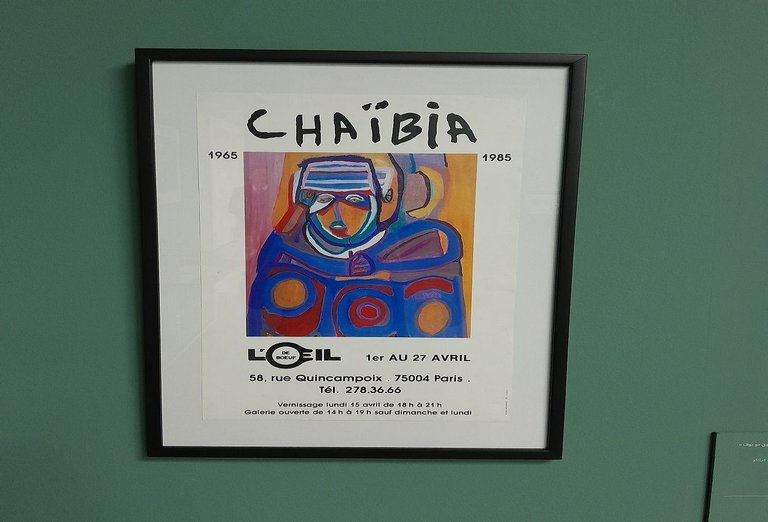
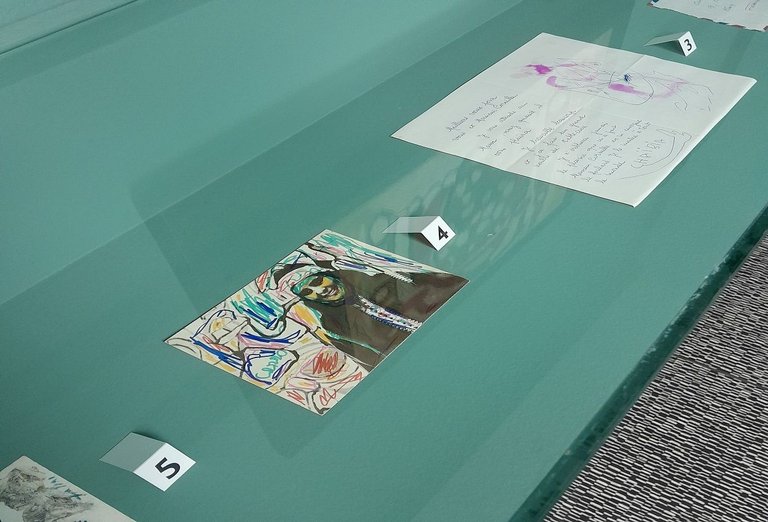
Thank you for taking the time to read this post. I look forward to seeing you next time, when I'll be presenting another exhibition just as fascinating as COBRA and CHAIBIA, on the first floor of the museum!
See you soon!

Photos taken by my own phone (Samsung Galaxy A04s).
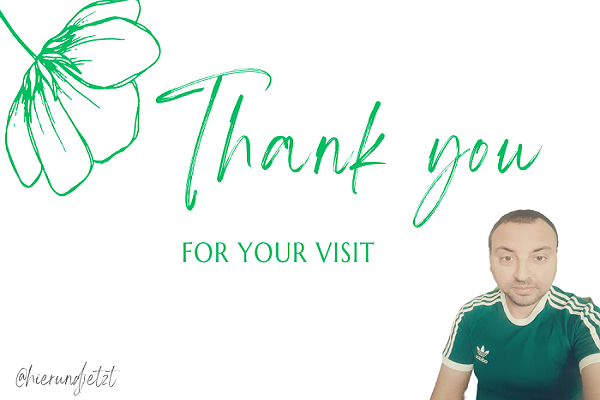
Very amazingly beautiful mesium, very cool ❤️
You can check out this post and your own profile on the map. Be part of the Worldmappin Community and join our Discord Channel to get in touch with other travelers, ask questions or just be updated on our latest features.
Congratulations on the report! I felt like I was on a virtual tour of the museum!